Dinu F Albeanu
@dinanthos.bsky.social
Researcher at Cold Spring Harbor Laboratory; Interests: Neuroscience, Predictive processing, Olfaction; albeanulab.cshl.edu
Come join us as a CSHL-Simons Fellow!
supporting bold research programs aimed at tackling fundamental questions across all Neuroscience areas, from NeuroAI to brain body interactions. CSHL Fellows are appointed for 3-5 years and direct their own research groups.
www.cshl.edu/about-us/car...
supporting bold research programs aimed at tackling fundamental questions across all Neuroscience areas, from NeuroAI to brain body interactions. CSHL Fellows are appointed for 3-5 years and direct their own research groups.
www.cshl.edu/about-us/car...
Fellows Positions | Cold Spring Harbor Laboratory
CSHL Simons Fellow in NEUROSCIENCE Cold Spring Harbor Laboratory (CSHL) is seeking to fill a Cold Spring Harbor Laboratory Fellow position in the area of NEUROSCIENCE (experimental and/or computationa...
www.cshl.edu
October 25, 2025 at 1:17 PM
Come join us as a CSHL-Simons Fellow!
supporting bold research programs aimed at tackling fundamental questions across all Neuroscience areas, from NeuroAI to brain body interactions. CSHL Fellows are appointed for 3-5 years and direct their own research groups.
www.cshl.edu/about-us/car...
supporting bold research programs aimed at tackling fundamental questions across all Neuroscience areas, from NeuroAI to brain body interactions. CSHL Fellows are appointed for 3-5 years and direct their own research groups.
www.cshl.edu/about-us/car...
Reposted by Dinu F Albeanu
Apply to the new CSHL grad program in BioAI/neuroAI!
(Masters degree or equivalent required in a quantitative area such as computer science, physics, mathematics, or engineering)
www.cshl.edu/phd-program/...
(Masters degree or equivalent required in a quantitative area such as computer science, physics, mathematics, or engineering)
www.cshl.edu/phd-program/...

October 22, 2025 at 11:59 PM
Apply to the new CSHL grad program in BioAI/neuroAI!
(Masters degree or equivalent required in a quantitative area such as computer science, physics, mathematics, or engineering)
www.cshl.edu/phd-program/...
(Masters degree or equivalent required in a quantitative area such as computer science, physics, mathematics, or engineering)
www.cshl.edu/phd-program/...
Reposted by Dinu F Albeanu
Human intelligence is overrated and not a useful yardstick for AI - a polemic. markusmeister.com/2025/09/15/w...
September 15, 2025 at 3:15 AM
Human intelligence is overrated and not a useful yardstick for AI - a polemic. markusmeister.com/2025/09/15/w...
Reposted by Dinu F Albeanu
Reposted by Dinu F Albeanu
1/ Mapping synaptic connectivity between individual neurons is extremely laborious. We developed BRISC, a new method that makes it possible to map inputs onto 100s of neurons in the same animal in a matter of weeks! Led by Alex Becalick and @antblot.bsky.social. 🧵
www.biorxiv.org/content/10.1...
www.biorxiv.org/content/10.1...

Barcoded Rabies In Situ Connectomics for high-throughput reconstruction of neural circuits
Sequencing of oligonucleotide barcodes holds promise as a high-throughput approach for reconstructing synaptic connectivity at scale. Rabies viruses can act as a vehicle for barcode transmission, than...
www.biorxiv.org
July 21, 2025 at 7:58 AM
1/ Mapping synaptic connectivity between individual neurons is extremely laborious. We developed BRISC, a new method that makes it possible to map inputs onto 100s of neurons in the same animal in a matter of weeks! Led by Alex Becalick and @antblot.bsky.social. 🧵
www.biorxiv.org/content/10.1...
www.biorxiv.org/content/10.1...
...all due to passion and the enthusiasm of the wonderful TAs and lecturers that make TENSS happen (only some with handles here): @pgupta-cshl.bsky.social @open-ephys.org @antblot.bsky.social @brunopichler.bsky.social @mtkostecki.bsky.social @neuroetho.bsky.social @alecamera.bsky.social
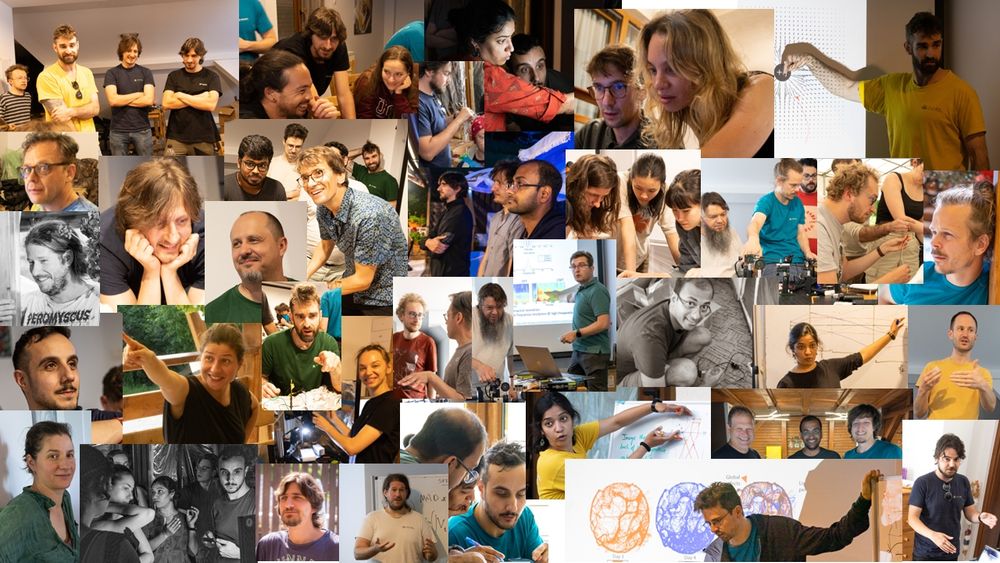
June 28, 2025 at 4:35 PM
...all due to passion and the enthusiasm of the wonderful TAs and lecturers that make TENSS happen (only some with handles here): @pgupta-cshl.bsky.social @open-ephys.org @antblot.bsky.social @brunopichler.bsky.social @mtkostecki.bsky.social @neuroetho.bsky.social @alecamera.bsky.social
the 2025 TENSSies...juggernaut joy, enthusiasm, curiosity, playfulness and journey of discovery.

June 26, 2025 at 1:13 PM
the 2025 TENSSies...juggernaut joy, enthusiasm, curiosity, playfulness and journey of discovery.
ongoing...a new edition of TENSS (www.tenss.ro). thanks to the wonderful people that make it happen yet again!

June 5, 2025 at 1:38 PM
ongoing...a new edition of TENSS (www.tenss.ro). thanks to the wonderful people that make it happen yet again!
In Upset, Centrist Wins Romania’s Presidential Election www.nytimes.com/2025/05/18/w...

In Upset, Centrist Wins Romania’s Presidential Election
www.nytimes.com
May 19, 2025 at 1:05 AM
In Upset, Centrist Wins Romania’s Presidential Election www.nytimes.com/2025/05/18/w...
Reposted by Dinu F Albeanu
BREAKING: NSF has frozen all grant funding, as of yesterday. It's unclear when they will resume funding awards, or why the pause has been put in place. www.nature.com/articles/d41...
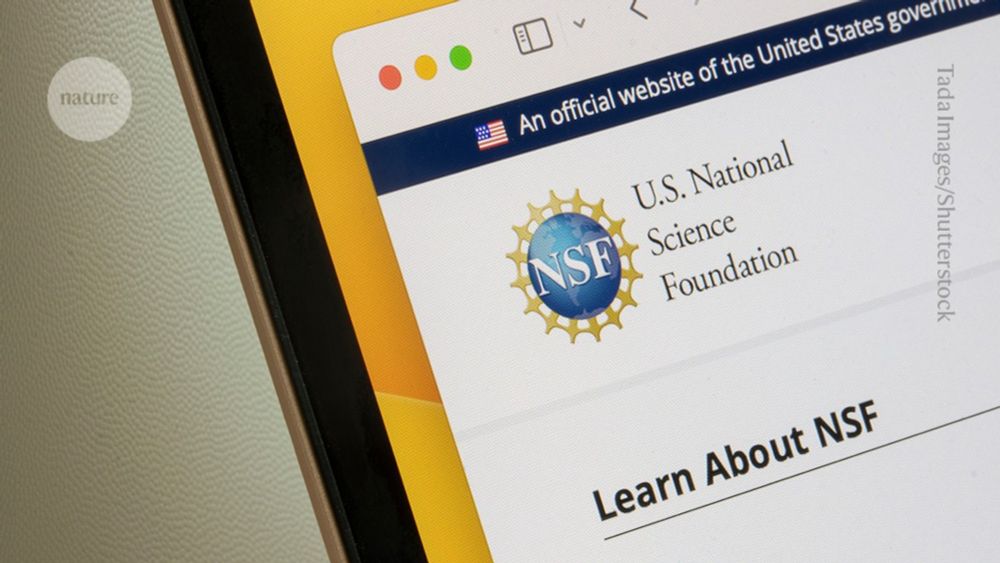
Exclusive: NSF stops awarding new grants and funding existing ones
US science funder also plans to screen grant applications for compliance with ‘agency priorities’.
www.nature.com
May 1, 2025 at 10:58 PM
BREAKING: NSF has frozen all grant funding, as of yesterday. It's unclear when they will resume funding awards, or why the pause has been put in place. www.nature.com/articles/d41...
Inching closer to understanding the physical, neural and perceptual odor spaces. Check out our progress on high-throughput mapping of odorant receptors (OR) to glomeruli and odor responses at the @achems.bsky.social poster tomorrow from Zarmeena, Kira, Walter and @alexkoulakov.bsky.social.

April 24, 2025 at 12:20 AM
Inching closer to understanding the physical, neural and perceptual odor spaces. Check out our progress on high-throughput mapping of odorant receptors (OR) to glomeruli and odor responses at the @achems.bsky.social poster tomorrow from Zarmeena, Kira, Walter and @alexkoulakov.bsky.social.
Reposted by Dinu F Albeanu
Published an op-ed for @cnn.com: “Nobel laureate: I owe America my success. Today, its scientific future is in danger.”
A personal reflection on what’s at stake as science funding gets slashed. I’d be grateful if you could amplify both in and beyond the science world.
www.cnn.com/2025/04/09/h...
A personal reflection on what’s at stake as science funding gets slashed. I’d be grateful if you could amplify both in and beyond the science world.
www.cnn.com/2025/04/09/h...
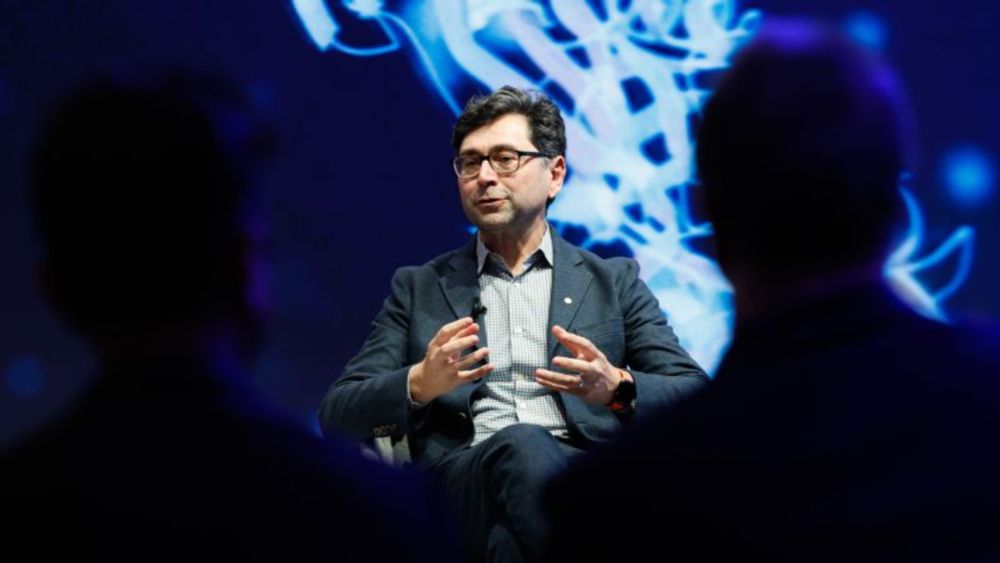
Nobel laureate: I owe America my success. Today, its scientific future is in danger | CNN
Dr. Ardem Patapoutian says he watches “with deep sadness as the United States’ remarkable scientific enterprise, which took generations of hard work and national investment to build, faces a concerted...
www.cnn.com
April 9, 2025 at 11:30 AM
Published an op-ed for @cnn.com: “Nobel laureate: I owe America my success. Today, its scientific future is in danger.”
A personal reflection on what’s at stake as science funding gets slashed. I’d be grateful if you could amplify both in and beyond the science world.
www.cnn.com/2025/04/09/h...
A personal reflection on what’s at stake as science funding gets slashed. I’d be grateful if you could amplify both in and beyond the science world.
www.cnn.com/2025/04/09/h...
Reposted by Dinu F Albeanu
Our first look at midbrain PAG’s role in singing mouse vocal control. When near each other, these mice produce two divergent vocal modes. Same circuits for USVs and Songs—or different ones? Bets were made..some of us bought beers for others! Led by @xmikezheng20.bsky.social & Clifford Harpole. 👇🏽
Important new work from @xmikezheng20.bsky.social @arkarupbanerjee.bsky.social et al
bit.ly/42dWcQN
ethology+modeling+targeted neural manipulation —> new textbook example of how evolutionary tinkering can generate multiple behavioral modes with a single neural circuit
#bioacoustics
#prattle 💬
bit.ly/42dWcQN
ethology+modeling+targeted neural manipulation —> new textbook example of how evolutionary tinkering can generate multiple behavioral modes with a single neural circuit
#bioacoustics
#prattle 💬

Parametric Modulation of a Shared Midbrain Circuit Drives Distinct Vocal Modes in a Singing Mouse
Neural circuits capable of generating multiple outputs are essential for behavioral flexibility, yet their organizational principles remain poorly understood. Using vocal communication in singing mice...
bit.ly
April 6, 2025 at 2:08 AM
Our first look at midbrain PAG’s role in singing mouse vocal control. When near each other, these mice produce two divergent vocal modes. Same circuits for USVs and Songs—or different ones? Bets were made..some of us bought beers for others! Led by @xmikezheng20.bsky.social & Clifford Harpole. 👇🏽
New preprint on common algorithms and evolutionary inventions that may account for apparent idiosyncratic encoding of odor concentration across species millions of years apart by taking advantage of divisive normalization: steered by Yang Shen, @arkarupbanerjee.bsky.social and Saket Navlakha. 1/3

An evolutionarily conserved scheme for reformatting odor concentration in early olfactory circuits
Understanding how stimuli from the sensory periphery are progressively reformatted to yield useful representations is a fundamental challenge in neuroscience. In olfaction, assessing odor concentration is key for many behaviors, such as tracking and navigation. Initially, as odor concentration increases, the average response of first-order sensory neurons also increases. However, the average response of second-order neurons remains flat with increasing concentration – a transformation that is believed to help with concentration-invariant odor identification, but that seemingly discards concentration information before it could be sent to higher brain regions. By combining neural data analyses from diverse species with computational modeling, we propose strategies by which second-order neurons preserve concentration information, despite flat mean responses at the population level. We find that individual second-order neurons have diverse concentration response curves that are unique to each odorant — some neurons respond more with higher concentration and others respond less — and together this diversity generates distinct combinatorial representations for different concentrations. We show that this encoding scheme can be recapitulated using a circuit computation, called divisive normalization, and we derive sufficient conditions for this diversity to emerge. We then discuss two mechanisms (spike rate vs. timing based) by which higher order brain regions may decode odor concentration from the reformatted representations. Since vertebrate and invertebrate olfactory systems likely evolved independently, our findings suggest that evolution converged on similar algorithmic solutions despite stark differences in neural circuit architectures. Finally, in land vertebrates a parallel olfactory pathway has evolved whose second-order neurons do not exhibit such diverse response curves; rather neurons in this pathway represent concentration information in a more monotonic fashion on average, potentially allowing for easier odor localization and identification at the expense of increased energy use. ### Competing Interest Statement The authors have declared no competing interest.
doi.org
March 26, 2025 at 10:27 AM
New preprint on common algorithms and evolutionary inventions that may account for apparent idiosyncratic encoding of odor concentration across species millions of years apart by taking advantage of divisive normalization: steered by Yang Shen, @arkarupbanerjee.bsky.social and Saket Navlakha. 1/3
Reposted by Dinu F Albeanu
openRxiv has arrived!
We’re thrilled to announce the launch of openRxiv as an independent, researcher-led nonprofit to oversee bioRxiv and medRxiv, the world’s leading preprint servers for life and health sciences.
openrxiv.org/introducing-...
#openRxiv #OpenScience #Preprints #bioRxiv #medRxiv
We’re thrilled to announce the launch of openRxiv as an independent, researcher-led nonprofit to oversee bioRxiv and medRxiv, the world’s leading preprint servers for life and health sciences.
openrxiv.org/introducing-...
#openRxiv #OpenScience #Preprints #bioRxiv #medRxiv
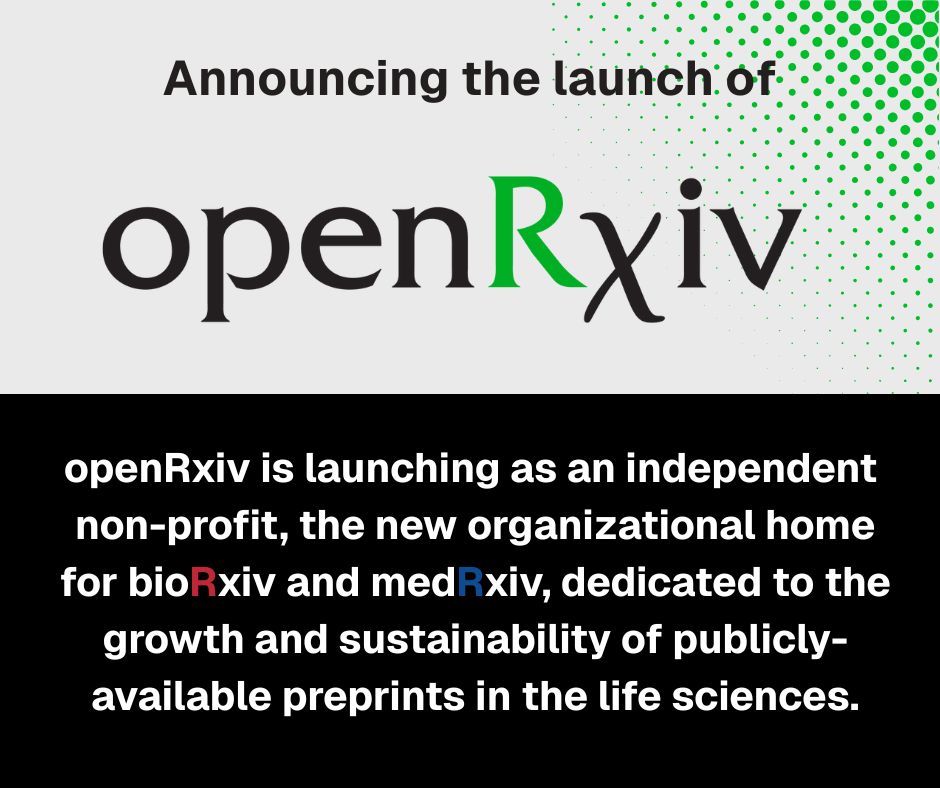
March 11, 2025 at 1:18 PM
openRxiv has arrived!
We’re thrilled to announce the launch of openRxiv as an independent, researcher-led nonprofit to oversee bioRxiv and medRxiv, the world’s leading preprint servers for life and health sciences.
openrxiv.org/introducing-...
#openRxiv #OpenScience #Preprints #bioRxiv #medRxiv
We’re thrilled to announce the launch of openRxiv as an independent, researcher-led nonprofit to oversee bioRxiv and medRxiv, the world’s leading preprint servers for life and health sciences.
openrxiv.org/introducing-...
#openRxiv #OpenScience #Preprints #bioRxiv #medRxiv
Reposted by Dinu F Albeanu
We must learn to showcase the practical significance of basic research, demonstrating how seemingly arcane investigations yield transformative applications, writes @tonyzador.bsky.social www.thetransmitter.org/outreach/how...
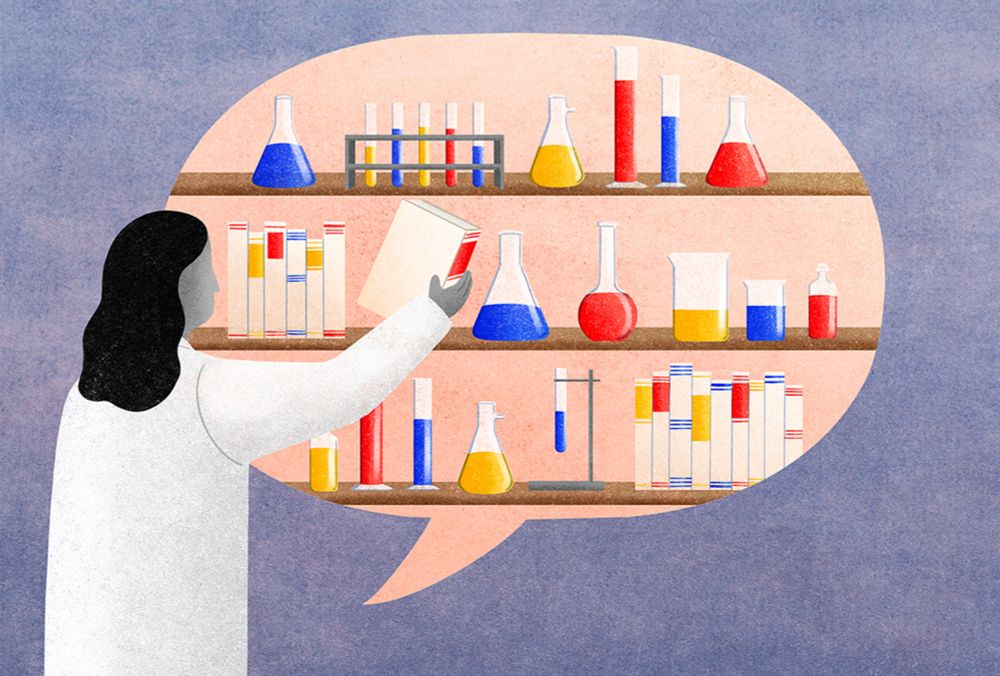
How to communicate the value of curiosity-driven research
The burden of proof is on us, as researchers, to explain why what we do is valuable to society.
www.thetransmitter.org
March 4, 2025 at 3:16 PM
We must learn to showcase the practical significance of basic research, demonstrating how seemingly arcane investigations yield transformative applications, writes @tonyzador.bsky.social www.thetransmitter.org/outreach/how...
New preprint: a simple method (ADePT) for optical control and recording of activity by axially-decoupling the focal planes for widefield patterned photo-stimulation and two photon imaging. Proof-of-principle analysis of functional connectivity in the olfactory bulb. 1/7 #neuroscience

Axially decoupled photo-stimulation and two photon readout (ADePT) for mapping functional connectivity of neural circuits
All optical physiology in vivo provides a conduit for investigating the function of neural circuits in 3-D. Here, we report a new strategy for flexible, axially-decoupled photo-stimulation and two pho...
doi.org
February 26, 2025 at 5:02 PM
New preprint: a simple method (ADePT) for optical control and recording of activity by axially-decoupling the focal planes for widefield patterned photo-stimulation and two photon imaging. Proof-of-principle analysis of functional connectivity in the olfactory bulb. 1/7 #neuroscience
Reposted by Dinu F Albeanu
Stand up for Science, on March 7th, in Boston. Please help spread this widely.

Boston, MA
Location: Massachusetts State House 24 Beacon St, Boston, MA, United States Address: 24 Beacon St., Boston, MA, 02133 Time: 12-4 PM Important information: Please do not fully block the sidewalk, st…
standupforscience2025.org
February 24, 2025 at 3:26 PM
Stand up for Science, on March 7th, in Boston. Please help spread this widely.
Reposted by Dinu F Albeanu
Here it is finally: Our mathematical methods book for life scientists! Aimed at advanced undergrads and beginning grad students, plus all those who want a deeper look at the math behind quantitative biology. @portugueslab.bsky.social.
1/3
1/3
"Mathematics in Biology" is a concise but rigorous textbook for advanced undergraduate and graduate students across the biological sciences that provides a foundation for understanding the methods used in quantitative biology: @mameister4.bsky.social

Mathematics in Biology
Biology has turned into a quantitative science. The core problems in the life sciences today involve complex systems that require mathematical expression, ye...
mitpress.mit.edu
February 20, 2025 at 6:32 PM
Here it is finally: Our mathematical methods book for life scientists! Aimed at advanced undergrads and beginning grad students, plus all those who want a deeper look at the math behind quantitative biology. @portugueslab.bsky.social.
1/3
1/3
Reposted by Dinu F Albeanu
NIH funding supported :
*** 412,041 jobs ***
*** $92.89 billion in new economic activity***
*** $2.46 for every NIH $1 spent.***
We are a $100B industry. Let's act like it
How about, at a bare minimum, we all just call our congressional reps
www.unitedformedicalresearch.org/annual-econo...
*** 412,041 jobs ***
*** $92.89 billion in new economic activity***
*** $2.46 for every NIH $1 spent.***
We are a $100B industry. Let's act like it
How about, at a bare minimum, we all just call our congressional reps
www.unitedformedicalresearch.org/annual-econo...
February 8, 2025 at 5:35 AM
NIH funding supported :
*** 412,041 jobs ***
*** $92.89 billion in new economic activity***
*** $2.46 for every NIH $1 spent.***
We are a $100B industry. Let's act like it
How about, at a bare minimum, we all just call our congressional reps
www.unitedformedicalresearch.org/annual-econo...
*** 412,041 jobs ***
*** $92.89 billion in new economic activity***
*** $2.46 for every NIH $1 spent.***
We are a $100B industry. Let's act like it
How about, at a bare minimum, we all just call our congressional reps
www.unitedformedicalresearch.org/annual-econo...
Reposted by Dinu F Albeanu
Horace Barlow, by all accounts, was thinking about 30 years ahead of his time. Here is a transcript of the opening keynote I gave at a symposium honoring Horace's scientific legacy: markusmeister.com/2024/12/14/h....
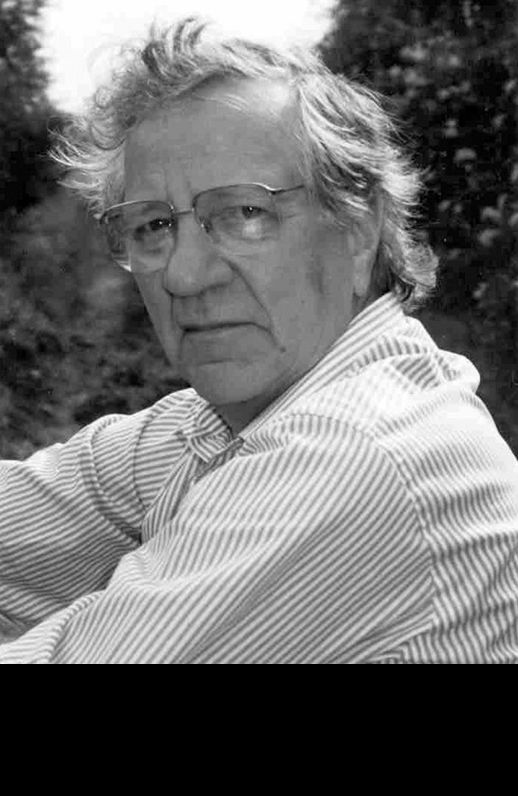
December 14, 2024 at 9:41 PM
Horace Barlow, by all accounts, was thinking about 30 years ahead of his time. Here is a transcript of the opening keynote I gave at a symposium honoring Horace's scientific legacy: markusmeister.com/2024/12/14/h....
New paper from the lab: feedback from piriform cortex to the olfactory bulb carries identity and reward contingency signals in a multimodal (odor and sound) rule-reversal task. Feedback is re-formatted within seconds and reflects changes in the perceived rules of engagement.
doi.org/10.1038/s414...
doi.org/10.1038/s414...

Fast updating feedback from piriform cortex to the olfactory bulb relays multimodal identity and reward contingency signals during rule-reversal - Nature Communications
Hernandez-Trejo, Ciuparu, and Garcia da Silva et al. report that the piriform-to-olfactory bulb feedback in the mouse carries multimodal identity and reward contingency signals, which are re-formatted...
doi.org
January 23, 2025 at 11:27 AM
New paper from the lab: feedback from piriform cortex to the olfactory bulb carries identity and reward contingency signals in a multimodal (odor and sound) rule-reversal task. Feedback is re-formatted within seconds and reflects changes in the perceived rules of engagement.
doi.org/10.1038/s414...
doi.org/10.1038/s414...



